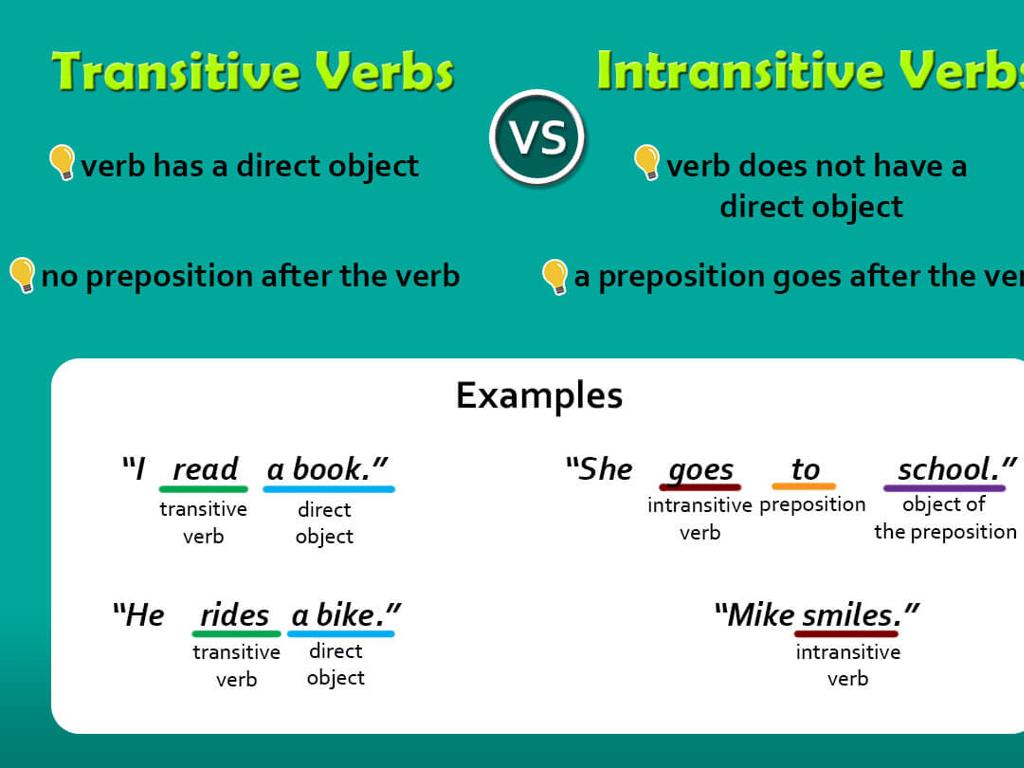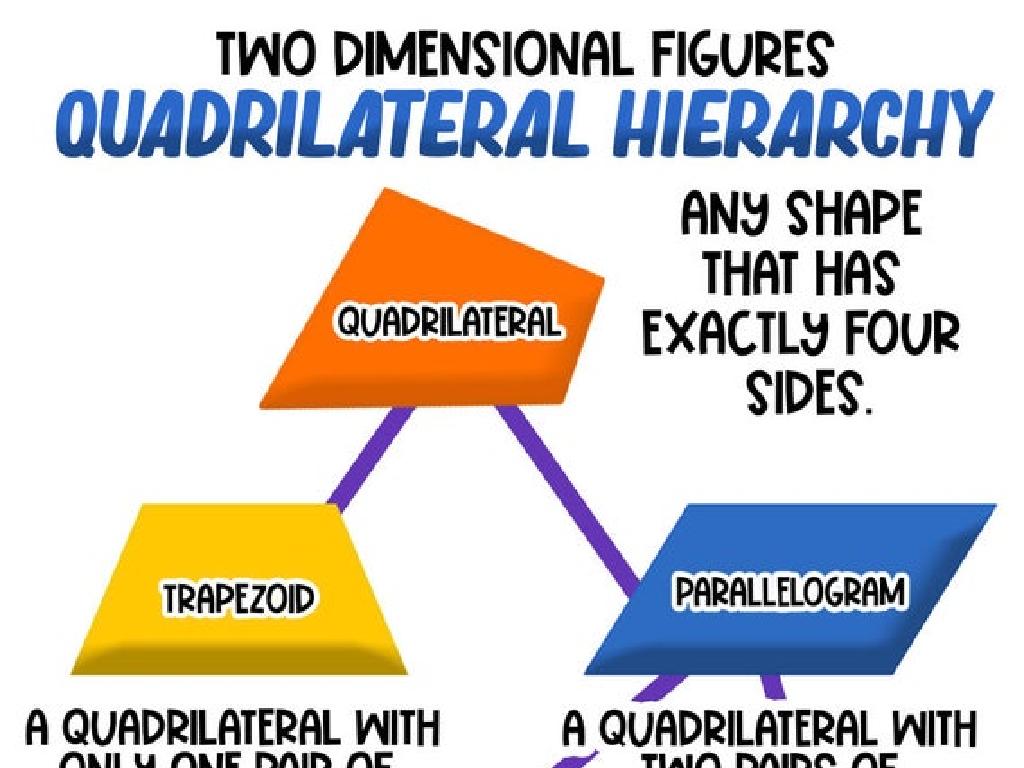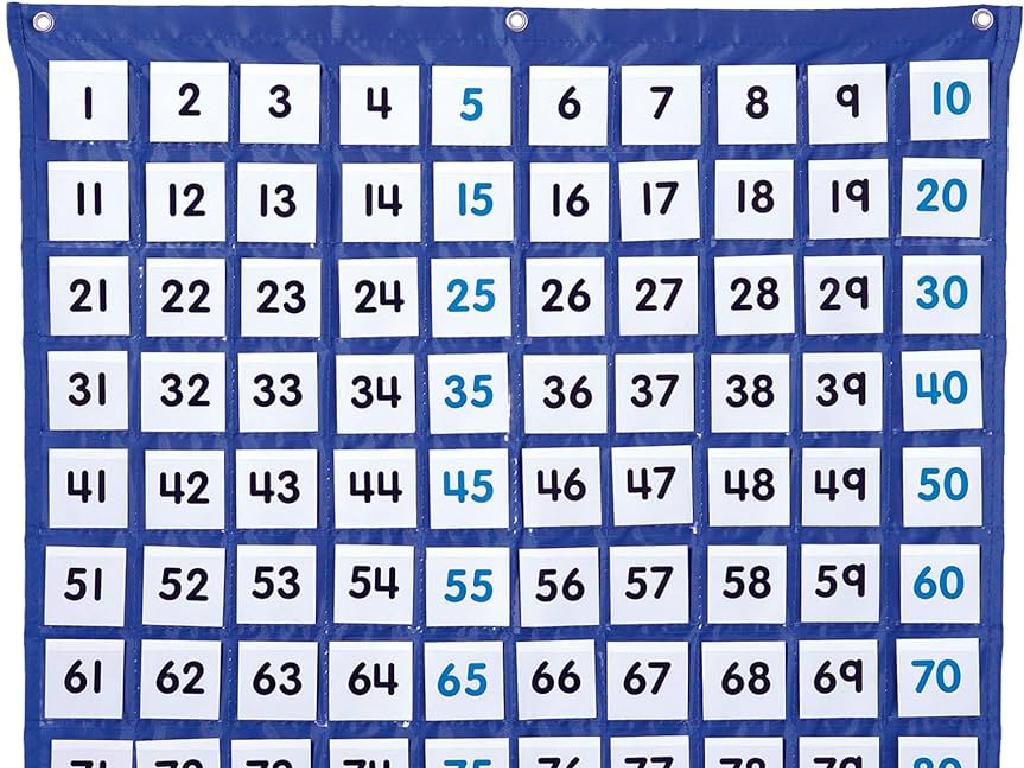Solve A System Of Equations Using Elimination
Subject: Math
Grade: Eighth grade
Topic: Systems Of Equations
Please LOG IN to download the presentation. Access is available to registered users only.
View More Content
Solving Systems with Elimination
– Define systems of equations
– A set of two or more equations with the same variables.
– Real-world applications
– Used in budgeting, planning, and problem-solving scenarios.
– Introduction to elimination
– Elimination involves removing one variable to solve for another.
– Process of elimination method
|
Begin by defining a system of equations as a collection of two or more equations that share common variables. Illustrate with real-life examples such as calculating budgets or planning construction projects to show the relevance of solving systems of equations. Introduce the concept of elimination as a method to solve these systems by adding or subtracting equations to eliminate one variable, making it easier to solve for the remaining variable. Emphasize that the goal is to reduce the system to a single equation with one variable. Provide a step-by-step guide on how to apply the elimination method, and prepare to demonstrate this with a few examples in the following slides.
Understanding Elimination Method
– Define Elimination in Algebra
– A method to solve systems by adding or subtracting equations to eliminate a variable
– Compare Elimination to other methods
– Unlike graphing, it’s algebraic. More systematic than substitution in complex systems
– Advantages of using Elimination
– It simplifies complex systems, often leading to quicker solutions without graphing
|
The elimination method is a technique for solving systems of equations. This method involves adding or subtracting equations to remove one variable, making it possible to solve for the other. When compared to graphing, elimination is purely algebraic and can be more precise, especially with complex systems where graphing might be impractical. Unlike substitution, which can become cumbersome with complex or large systems, elimination can often provide a more straightforward path to the solution. It’s particularly advantageous when the system is already set up for elimination or can be easily manipulated to achieve this. During the lesson, provide examples of systems that are easier to solve by elimination and those that might be better suited for graphing or substitution, helping students understand when to use each method.
Setting Up Equations for Elimination
– Align variables and constants
– Ensure x and y terms and constants are vertically aligned
– Opposite coefficients for elimination
– Adjust equations to have opposite numbers for one set of variables
– Example: Aligning x’s and y’s
– Consider 2x + 3y = 6 and -2x + y = 4, x’s are aligned and coefficients are opposites
– Practice with sample equations
– Try aligning and creating opposites in 3x – y = 7 and x + 2y = 8
|
This slide introduces the process of setting up systems of equations for the elimination method. Start by aligning like terms (x’s with x’s and y’s with y’s) and constants on one side. Then, manipulate the coefficients of either x or y so they are opposites in each equation. This allows for the elimination of one variable when the equations are added together. Use the example provided to demonstrate this process, and then give students a set of equations to practice aligning and adjusting coefficients on their own. Encourage students to check their work by substituting the found values back into the original equations.
Solving Systems by Elimination
– Eliminate one variable by addition/subtraction
– Solve for the remaining variable
– Back-substitute to find the other variable
– Example: 2x + 3y = 6, 4x – 3y = 12
– Add the equations: 2x + 3y + 4x – 3y = 6 + 12
|
This slide introduces the elimination method for solving systems of equations, a key concept in algebra. Start by explaining that elimination involves adding or subtracting the equations to remove one variable. Once a variable is eliminated, solve the remaining equation for the other variable. After finding one variable, substitute it back into one of the original equations to solve for the second variable. Use the example provided to illustrate the process step by step. For instance, adding the equations 2x + 3y = 6 and 4x – 3y = 12 eliminates the y variable, resulting in 6x = 18, which simplifies to x = 3. Substituting x = 3 into one of the original equations will give the value of y. Encourage students to practice this method with different systems of equations to become proficient.
Solving Systems by Elimination: Practice Problem
– Set up the system of equations
– We have x + y = 5 and x – y = 1
– Add the equations to eliminate y
– Adding x + y = 5 to x – y = 1 gives 2x = 6
– Solve for x
– Dividing both sides by 2, we find x = 3
– Substitute x back to find y
– With x known, substitute in x + y = 5 to find y = 2
|
This slide is a guided practice problem to solve a system of equations using the elimination method. Start by writing the given equations on the board: x + y = 5 and x – y = 1. Explain that by adding the two equations, we can eliminate the variable y because the terms y and -y cancel each other out. After finding the value of x, demonstrate how to substitute this value back into one of the original equations to solve for y. Encourage students to follow along with the steps and solve the system in their notebooks. After completing the example, provide additional similar problems for students to practice independently or in small groups, ensuring they grasp the elimination method.
Complex Systems Using Elimination
– Systems without immediate opposites
– Multiply to facilitate elimination
– Adjust coefficients to oppose each other
– Example: Solve 3x + 2y = 7, 5x – y = 8
– Multiply first equation by 5, second by 2
– Steps for elimination method
– Add/subtract equations to eliminate one variable
|
This slide addresses the elimination method in solving systems of equations when the system does not have coefficients that are immediate opposites. Students will learn to multiply one or both equations by a number that will create an opposite coefficient for one of the variables, thus allowing for elimination. For example, to solve the system 3x + 2y = 7 and 5x – y = 8, we can multiply the first equation by 5 and the second by 2, which gives us 15x + 10y = 35 and 10x – 2y = 16. Adding these two new equations will eliminate y, making it possible to solve for x. After finding the value of x, substitute it back into one of the original equations to find the value of y. The slide should emphasize the importance of carefully selecting the multiplication factors to ensure one variable can be eliminated. The teacher’s notes should include a step-by-step guide on the elimination process and encourage students to practice with different systems.
Class Activity: Solving Systems by Elimination
– Pair up for elimination method
– Systems of equations on board
– Solve the given systems together
– Add or subtract equations to eliminate one variable
– Discuss solutions as a class
– Share different methods and answers
|
This class activity is designed to encourage collaborative problem-solving and reinforce the concept of using elimination to solve systems of equations. Students should pair up and work together to solve the systems displayed on the board. The teacher will provide different sets of equations for each pair to ensure a variety of examples. After solving, students will discuss their solutions and methods with the class, allowing them to see multiple ways to approach the problem and understand common mistakes. The teacher should circulate to assist pairs as needed and prepare to highlight key strategies during the class discussion. Possible activities include solving for x first, then y, checking solutions by substitution, and comparing methods with other pairs.
Homework: Mastering Elimination Method
– Solve additional problems at home
– Review the elimination steps
Remember to align variables, combine equations, and solve for unknowns.
– Create your own systems
Challenge yourself by making up systems and solving them.
– Practice leads to perfection
|
This slide is aimed at reinforcing the students’ understanding of solving systems of equations using the elimination method. The homework assignment includes a set of additional problems that students should attempt to solve independently, allowing them to apply the steps learned in class. Encourage students to review the steps for the elimination method, which involves aligning variables, combining equations, and solving for unknowns. Motivate them to create their own systems of equations as a way to deepen their understanding and challenge themselves. Remind them that practice is essential for mastering mathematical concepts. Provide guidance on how to approach creating their own problems, and remind them to check their work for accuracy.
Conclusion: Mastering Elimination Method
– Recap of elimination method
– A technique to solve systems by adding or subtracting equations to eliminate a variable.
– Emphasize practice significance
– Regular practice solidifies the method and improves problem-solving skills.
– Understanding is key
– Grasping the concept ensures successful application to different problems.
– Glimpse into next lesson
– Anticipate learning more advanced systems of equations.
|
As we wrap up today’s lesson on using the elimination method to solve systems of equations, it’s crucial to remember the steps we’ve learned. The elimination method involves combining equations to cancel out one of the variables, allowing us to solve for the other. Consistent practice is essential for mastering this technique, as it will become more intuitive over time. Understanding the underlying concepts is just as important as being able to perform the calculations, as this will enable students to tackle a wider range of problems. Looking ahead, we will build on this foundation in our next lesson, where we will explore more complex systems and apply our knowledge to new challenges. Encourage students to review their notes and practice additional problems at home to reinforce their learning.






